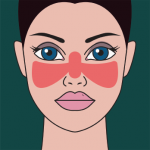This work to find informative categories continues. “Could what we call lupus be multiple diseases that were grouped together for historic reasons or because of the presence of specific autoantibodies, like anti-DNA? Conflating heterogeneous phenotypes can facilitate discoveries of common disease mechanisms, but it can also make more difficult the teasing apart of subsets driven by different pathology,” speculates Dr. Salmon. “The commonality is autoimmunity and specific patterns of autoantibodies, and the remarkable aspect is variability of manifestations and the observations that one patient can go from one group of symptoms and signs to another. It’s very fluid.”
In terms of classification, Dr. Salmon comments on the heterogeneity of manifestations of lupus patients: Some patients have discoid cutaneous lesions, some have arthritis and photosensitivity, and others have central nervous system disease, renal disease and cytopenias.
Then there is the range of lupus-like diseases. “There appears to be a spectrum of autoimmune rheumatic diseases, including lupus, rheumatoid arthritis, scleroderma, mixed connective tissue disease, undifferentiated connective tissue disease, Sjögren’s syndrome and myositis.” She explains that some patients fit into one of those diagnoses according to defined classification criteria. Yet some may have manifestations related to another category and may evolve to fulfill criteria for two diseases. Although not very common, there are lupus patients with Sjögren’s features, myositis and inflammatory rheumatoid-like arthritis.”
Dr. Salmon points out the question of categorization remains an important one to this day. “Do we lump or split? Our therapies will increasingly address specific disease mechanisms, yet until now we have been grouping based on clinical and laboratory features, very much like Kaposi. New information is emerging to guide how we lump and split patients with lupus.”
She notes that because of the limited tools available to him, Dr. Kaposi could lump or split disease groups primarily based on organ system symptoms and pathology findings. “But now we can also subset patients based on autoantibodies, gene expression profile, alleles of certain genes or other biomarkers. We are still lumping and splitting, but we have access to more precise tools than Dr. Kaposi did.”
Dr. Salmon suggests that through his careful descriptions and case studies, Dr. Kaposi was establishing a kind of early version of classification criteria for SLE. “Now, we use validated classification criteria to help us have consistent definitions of patients for clinical trials,” she says. “We are beginning to look at subsets of responders to specific therapies, using tools beyond the physical examination, clinical laboratory tests and the microscope, to approach treatment from the perspective of disease mechanism.”


